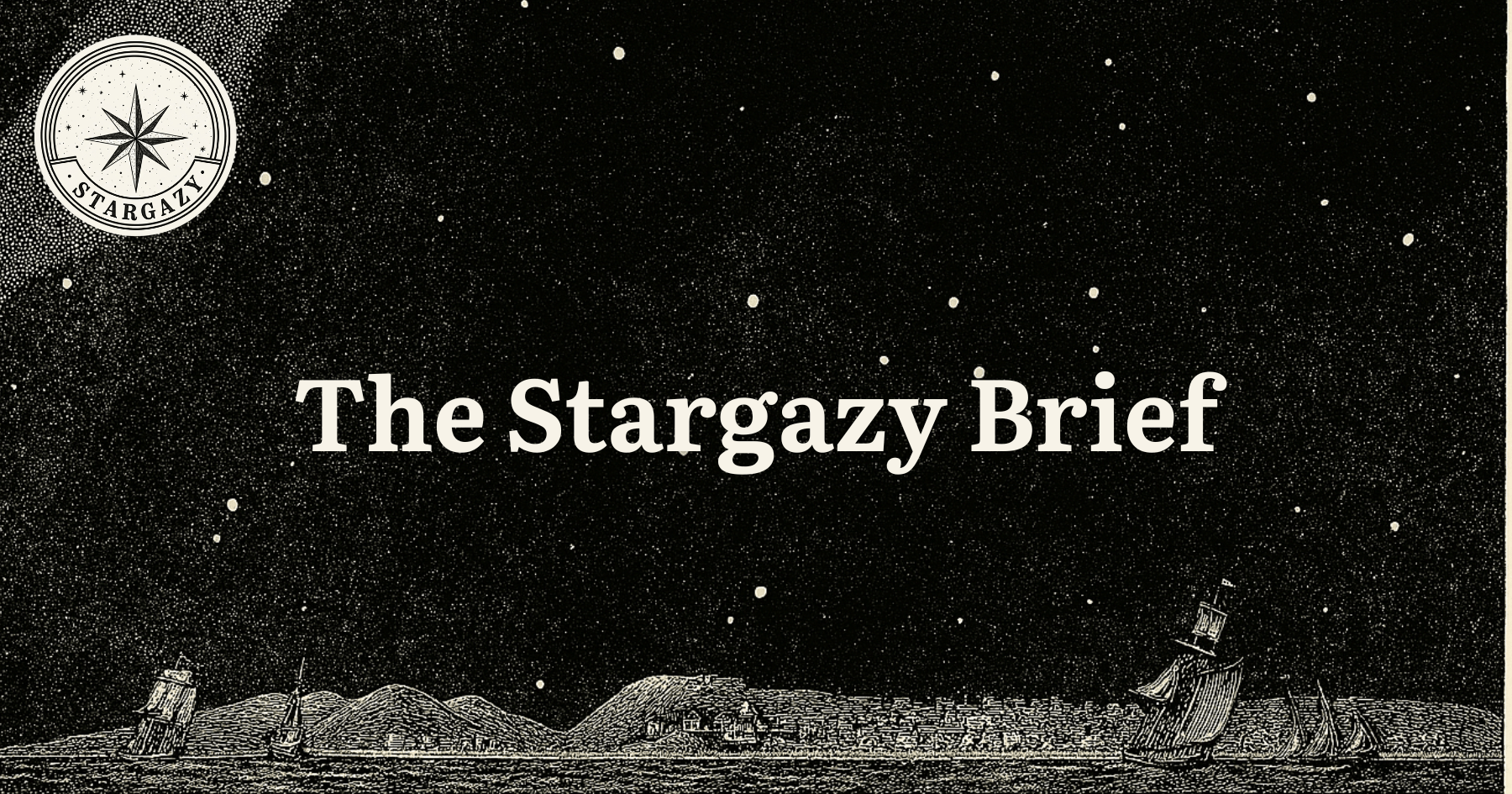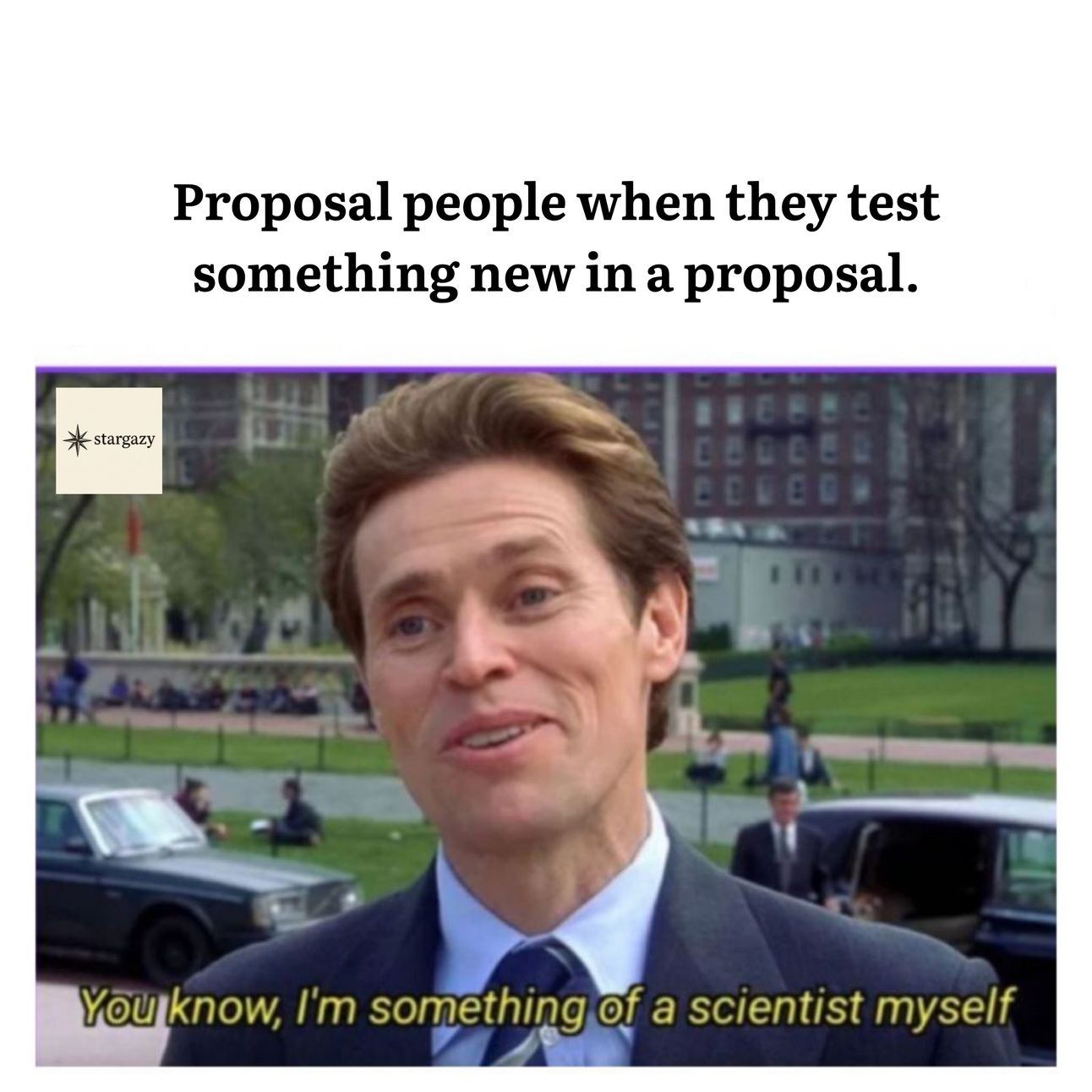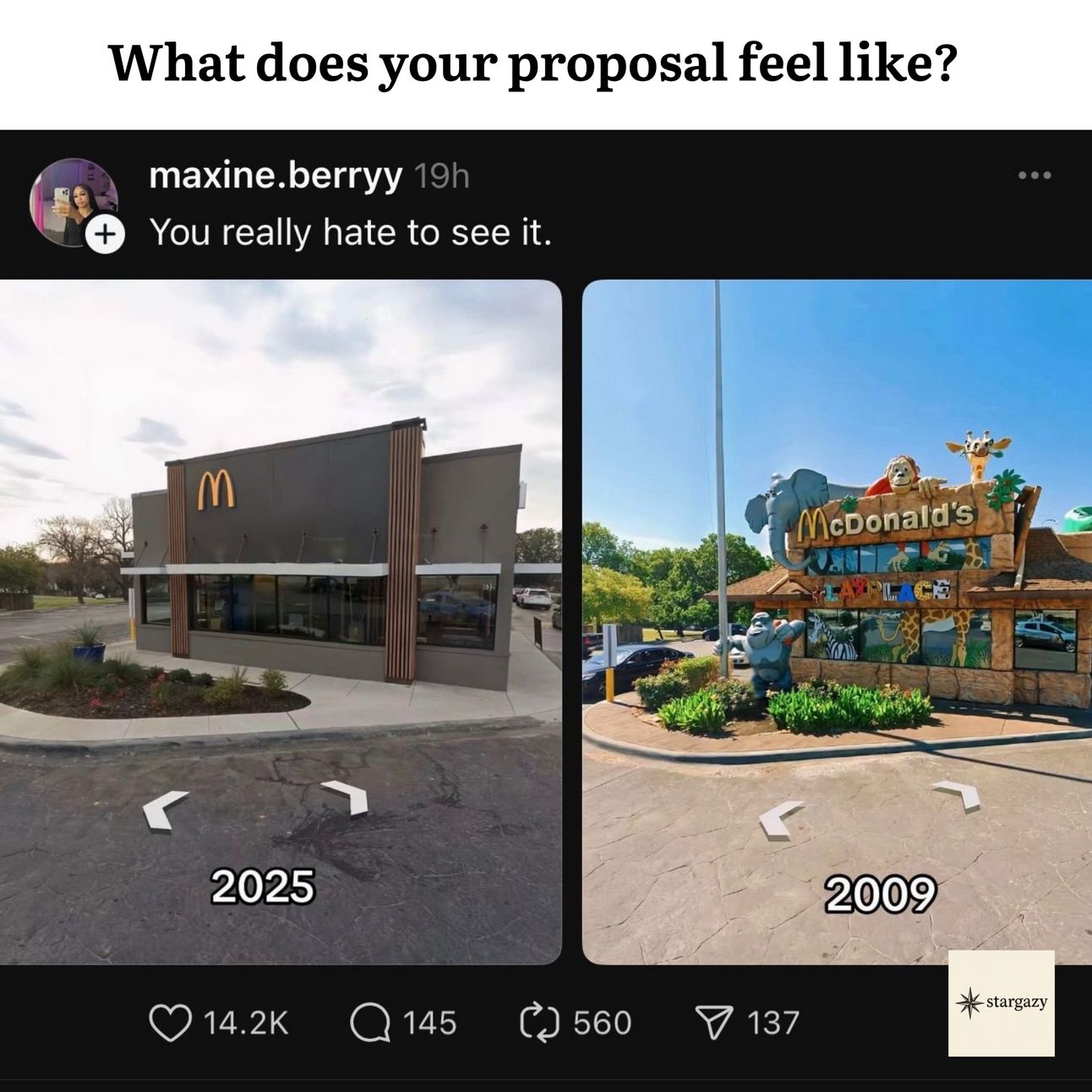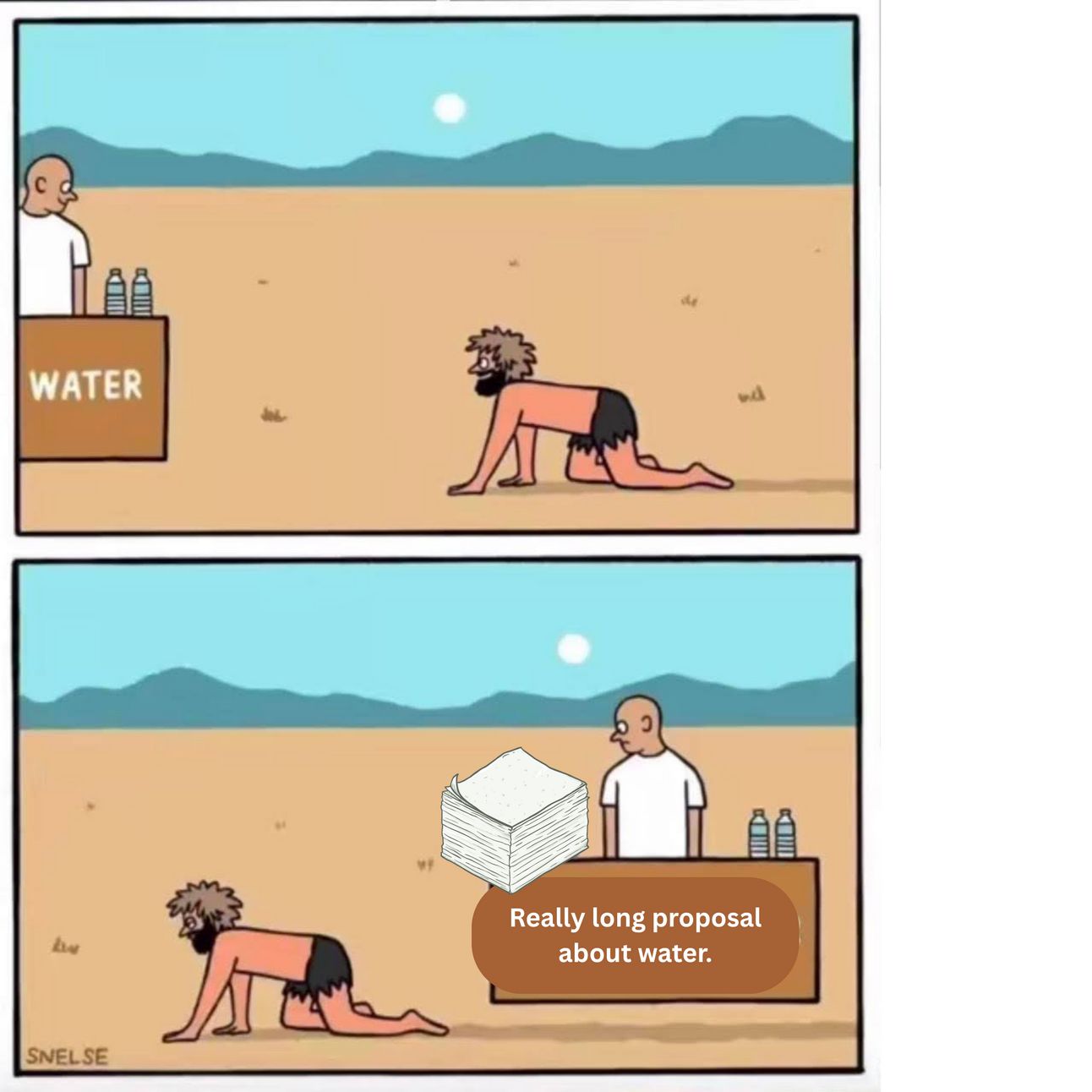- The Stargazy Brief
- Posts
- Your Proposal Is a Risk Test. Are You Failing It?
Your Proposal Is a Risk Test. Are You Failing It?
5 brutal truths to make your proposal unforgettable.

🌟 Your Proposal Isn’t Losing on Price
It’s losing on… cowardice.
You’re not submitting a proposal, my darlings. No, you’re submitting a risk profile.
If your proposal is full of promises, vague language, and safe points of view, you instantly become the vendor they can’t trust to lead.
The buyer doesn’t want the best solution (not really, although they say they do.)
What they really want is the option that’s easiest to defend if it fails.
I’ve been the person who lost sleep over a proposal software tech software purchase: what if it didn’t work? What if the CRO hated it? What if it didn’t get adopted? Would I lose my job? Would everyone hate me forever and always.
Choosing the best choice as opposed to the safe choice was a huge risk for me, and I was terrified to make the choice.
I learned in that moment that I had to stop trying to look impressive in my proposals.
Instead, I needed to start writing proposals like we were the super obvious option and safe.
🌟 Rule #1: Certainty Closes. Compliance Gets Shortlisted :)
You followed the instructions. Wow!
You answered the questions. Wow!
You were compliant. Wow!
You followed APMP best practices. Wow!
So did everyone else.
But your buyer isn’t choosing you just because you know how to build and follow a compliance matrix.
Yes, you need to be compliant, but they will (or won’t) choose you based on certainty.

🐝 How and What to Replace:
“Here are three options…” → “Here’s exactly what we recommend and why.”
“We’re flexible.” → “Here’s our specific, well-tested process, proven across these named similar orgs.”
“Let us know if you have questions.” → “Here’s the exact next step to tailor this to you.”
💫 Anecdote:
I once gave a buyer three onboarding paths, thinking I was being consultative and oh-so flexible.
We didn’t win. And the feedback crushed my very soul when they told me, “It felt like you wanted me to decide what would work best instead of showing us you know what works.”
I never made that mistake ever again. And I don’t want you to make it, either.
🌟 Rule #2: The proposal is a user experience test, and yours might be broken?
Your buyer isn’t reading your proposal with care, comfy on their sofa, with a cute highlighter.
Instead, they’re skimming your proposal between Zoom calls and wondering what they’re going to make for dinner and how long they can ignore the non-stop Slack messages they keep getting.
Most proposals aren’t skimmable, but they need to be.
If your proposal feels like work to read, if the buyer can’t easily find the answer they want, then they’re going to mark you down and kind of secretly hate you.
🐝 Fix the UX:
If you want to make your proposals more skimmable, I suggest ya try to:
Do a 5-second scan test per section
Make sure you’re using a fair number of bold, bullets, and callouts
Add more visual cues than walls of text, highlighting what you reallly want them to notice.
💫 Anecdote:
I am a pretty big reader. 600+ page high-fantasy books do not intimidate me. However, proposals are not novels.
A few weeks ago, I received a 25 page proposal from a podcast vendor because yeah, I am doing a podcast now. Did I skim it because it was wayyyy too long?
You better believe it.
🎙️ The Stargazy Brief podcast is launching mid-August. If you're into bold proposal truths from proposal pros, rogue RFP tactics your competitors aren’t using, and controversial tech founder interviews... you're gonna want in.
🌟 Rule #3: If you’re not for someone, you’re for no one
Polished, neutral, and safe is now code for forgettable.
And from what I am seeing, safe is no longer safe.
“If your positioning is weak, customers default to the status quo.”
- April Dunford
You don’t need to sound smart, but you do need to sound like you’ve done the thinking for them.
🐝 Be polarizing:
“We’re not a fit for X. We are perfect for Y.”
“Here’s what we deprioritized and why.”
“Here’s the one way we’d approach your situation, based on experience.”
Don’t be for everyone. Be undeniable to someone.

🌟 Rule #4: Microcopy builds macro trust
Buyers don’t always say what they’re afraid of, but their fear is what drives the decision.
So add little lines that kill objections before they form:
🐝 Microcopy that matters:
“No additional cost to scale to 500 users.”
“You own all IP from day one.”
“We’ve done this 120 times with companies your size, including…”
We need to do everything we can to remove uncertainty in 7 words or less.

🌟 Rule #5: You’re not selling a solution. You’re selling relief.
Your proposal has got to be doing so much more than selling your product and proving the benefit/ROI/COI.
Ya also need to be hard-selling relief from the complexity, internal risk, and making the wrong call by choosing you.
That means you need to provide very specific, clear next steps. It means you need to have a very obvious perspective and PoV. It means you need to show you are THE thought leader in the space, and if they follow you, you won’t lead them astray.
This 100% means you’re also not here to say, “We can do that, too,” because that is what EVERYONE is saying.
You’re here to say, “We’ve done this before, in this specific way, and we’ll make it easy.”
TL;DR: You’re Not Submitting a Proposal
You’re submitting proof that choosing you won’t backfire.
So make it feel like:
✨ A decision they won’t regret
✨ A team that’s already thought it through
✨ A path that’s clear and safe to follow
They’re not choosing the best proposal, my darlings.
They’re choosing the one that won’t get them fired.
Thanks for reading!
xoxo,
Chris, founder of stargazy
🌌 Stargazy is launching soon
Get early access: https://stargazy.io/
Follow our podcast: LinkedIn
